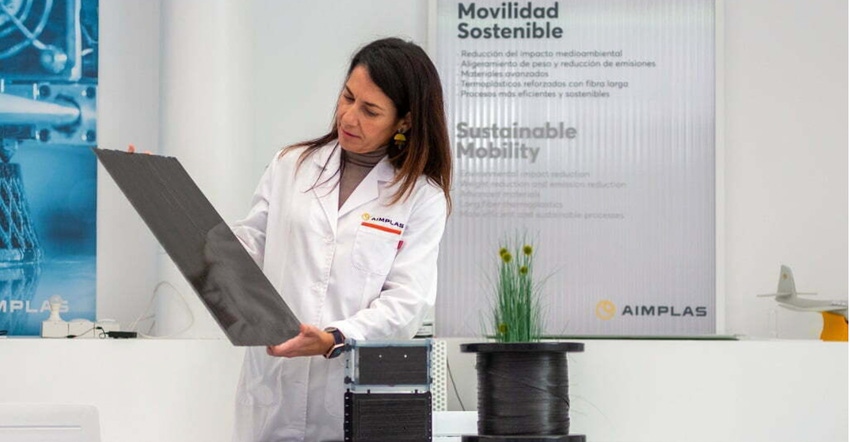Sustainable structural battery casings for lightweight vehicles are based on reusable, recyclable long-fiber thermoplastic composites.
June 21, 2022

Many drivers of electric cars are troubled by “range anxiety,” a common worry drivers feel when they believe their battery will run out and leave them stranded before they reach their destination. Aimplas is working with the SMART5G Project on a safe, intelligent, efficient, and sustainable system that enables drivers to replace their discharged battery packs with charged ones and thus avoid waiting for their batteries to re-charge.
The driving force of the Aimplas project is the design and development of a battery charging and replacement station for lightweight mobility. The project is specifically focused on developing a system that allows dead batteries to be quickly swapped for batteries charged with solar energy. The system uses artificial intelligence (AI) algorithms to predict cars’ energy consumption and battery usage. The SMART5G Project also involves creating an intelligent energy-management platform that improves security and safety and eliminates the risk of electromagnetic interference.
According to Begoña Galindo, a Sustainable Mobility Researcher at Aimplas, sustainable mobility is now “a strategic priority at local, national, European, and global levels, which makes it essential to promote new technological solutions that guarantee safe, connected, and smart mobility for personal and delivery vehicles while reducing CO2 emissions.” Lightweight, electromagnetically shielded composite materials are being developed with SMART5G to optimize these new models and ensure that the battery is protected against potential electromagnetic interference.
The initiative is also developing sustainable, structural battery casings for lightweight vehicles based on reusable, recyclable long-fiber thermoplastic composites with two functionalities — flame-retardant additives and particles for electromagnetic shielding (EMI). By replacing metal casings with the new lightweight thermoplastic casings, this solution increases range by reducing vehicle weight, which, in turn, reduces energy costs and consumption, not to mention the carbon footprint.
“Thermoplastic matrix composites could play a key role in industry in the 21st century due to their many advantages, including weight reduction, high rigidity, and specific strength comparable to metal materials. The new generation of electric car manufacturers is starting to use these plastic materials, which enable free design and make cars around 40% lighter,” said Begoña Galindo.
You May Also Like


